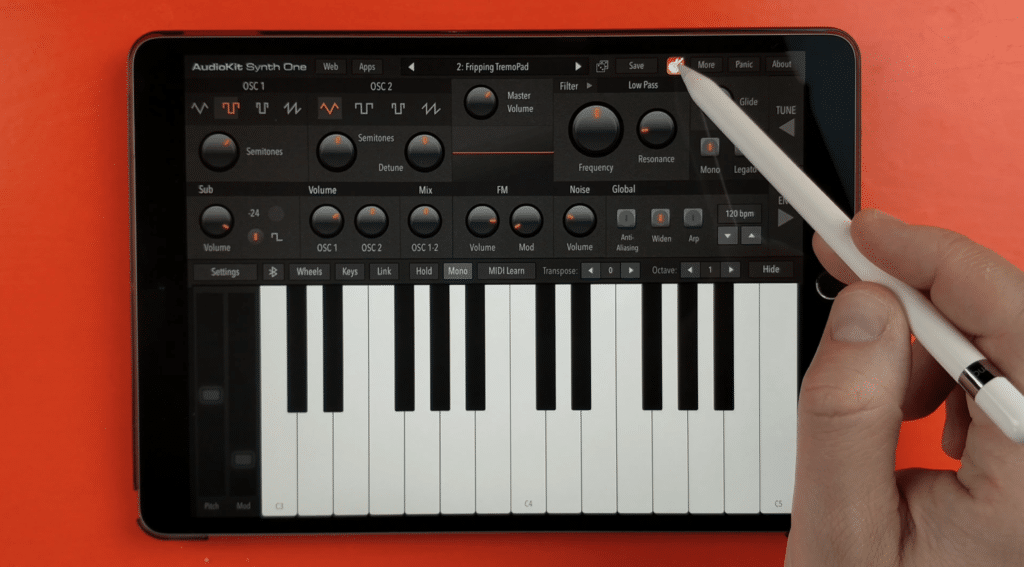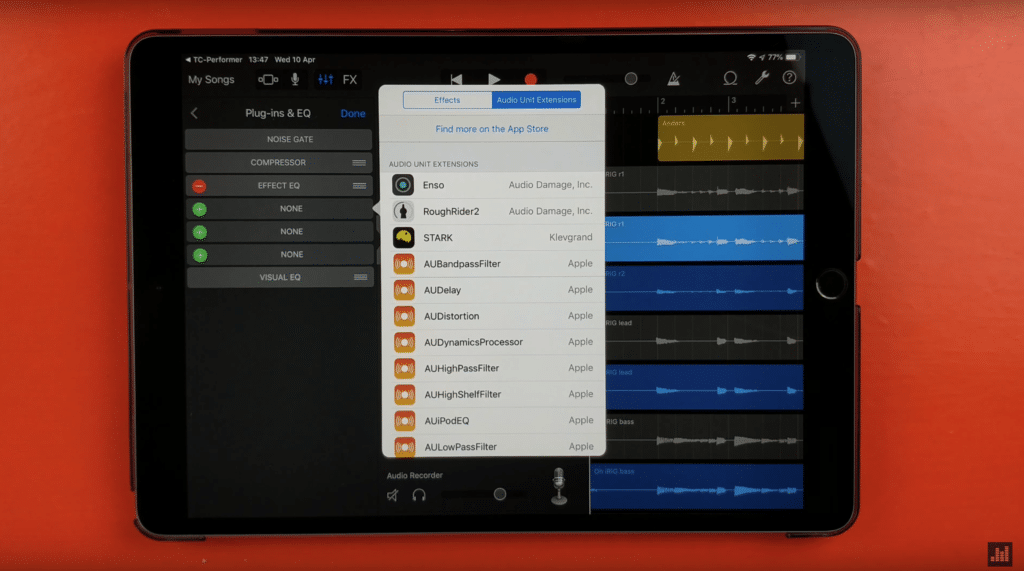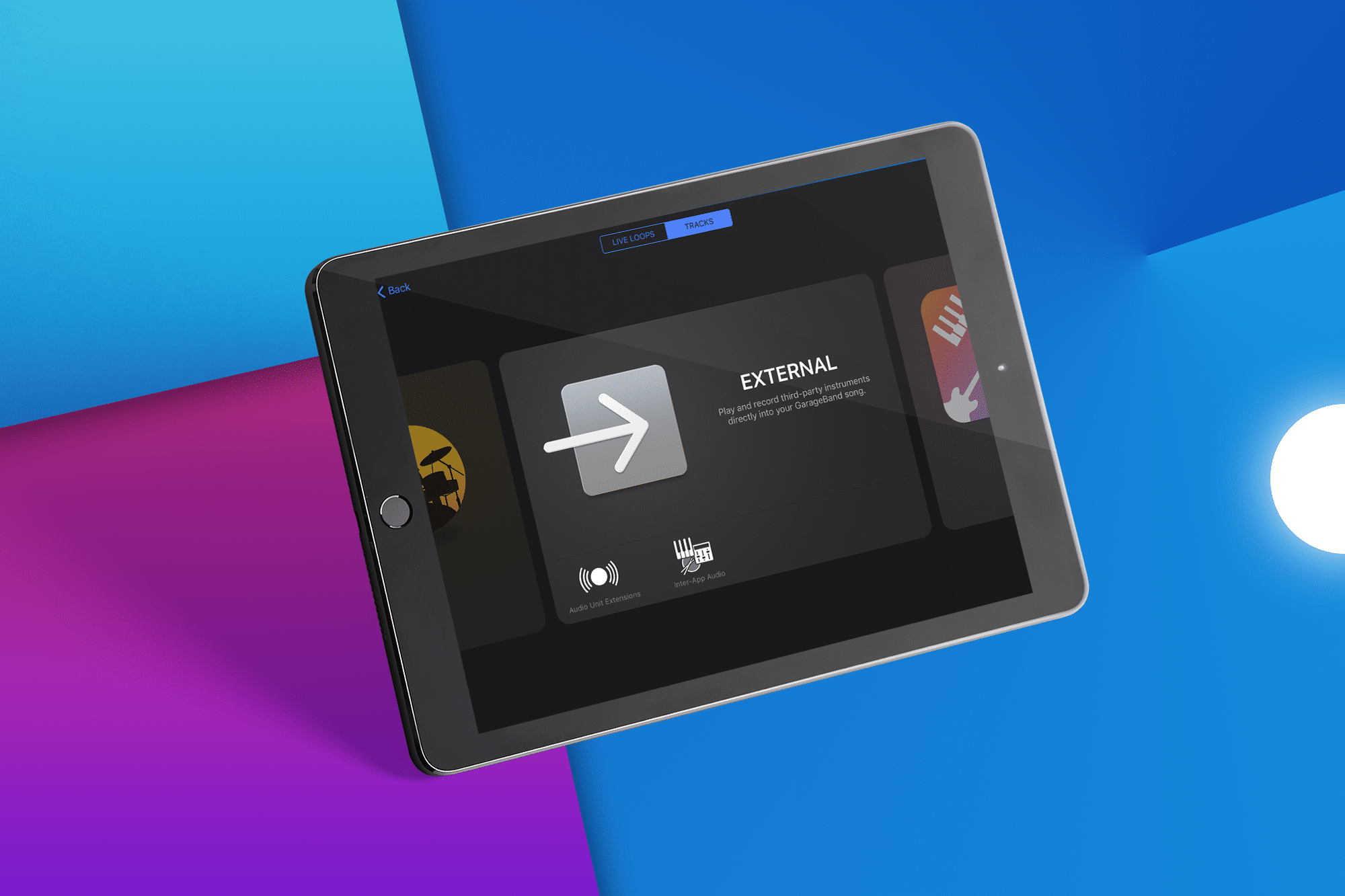If you’re just getting started with mobile music production on iOS, the terms Inter App Audio and AUv3 might leave you feeling a bit confused.
In the video below I’ll explain a bit about these audio connection methods and share some pros and cons of both.
Inter App Audio
Released in 2013 alongside iOS7, Inter App Audio was Apple’s answer to Audiobus.
Before IAA launched, if you were making music on iOS, Audiobus was most probably a huge part of your workflow.
Essentially, Audiobus is a standalone app that allows installed and compatible apps to send audio to one another.
The attraction of Inter App Audio over Audiobus is that it’s already built into the Operating System – there’s no need to pay for and download a separate app.
In GarageBand for iOS, you can find a list of IAA Apps in the External Sounds section of the Sound Browser. Tap on Inter App Audio and choose from any IAA compatible apps you have installed.
You’ll be taken to the Audio Recorder, where you can see a small icon depicting the Inter App Audio app you have loaded – tapping its icon will switch from GarageBand’s interface to your app.
You can switch to different apps by tapping the jack icon and tapping the inter app audio tab.

One of the biggest things that IAA has going for it is the amount of compatible apps that you can use with it. It’s a massive list, giving you a lot of options when it comes to choosing instrument and effect sounds.
You can only have one instance of an IAA App loaded on a track at a time though, which does limit your ability to add multiple external effects, or load multiple instances of the same app on a track.
The IAA implementation in GarageBand for iOS is a bit clunky too – i’m not really a fan of having to switch back and forth between app interfaces when trying to record or edit projects.
Audio Unit Version 3
Introduced in 2015 with the release of iOS9, Audio Units, Audio Unit extensions, AUV3; whatever you want to call it, will seem very familiar to anyone who has used GarageBand – or Logic Pro for that matter – on Mac.
Mobile music makers no longer have to rely on (what some would consider) clunky solutions like Audiobus and Inter App Audio.
Instead, apps can simply be run from within your preferred iOS DAW – just as they would on the desktop platform.
The last year to 18 months has seen an explosion in the number of AUv3 apps available, both new apps and updated versions of old favourites.
In GarageBand, you’ll be adding your AUv3 app to an existing track within a project.
On the tracks screen, tap the track controls button and tap on ‘Plugins and EQ’.
Tap Edit in the top right of the window and tap a green plus icon.
To add an AUv3 app to the slot, tap the Audio Unit Extension tab to select from any AUV3 apps you have installed, or Apple’s own (serviceable but decidedly beige) offerings.

AUv3 apps can be loaded directly into a host App which makes it much easier to change settings quickly, eliminating the need to switch between apps.
This method also results in far less strain on your CPU. There are reports of users finding that recording and editing on their older iOS devices is a lot snappier and seeing less instances of the dreaded ‘Optimizing Performance’ message when using AUv3 over Inter App Audio.
You can load multiple instances of the same app on a single track too, a significant advantage that AUv3 has over IAA.
At the time of writing, there isn’t quite as many AUV3 audio apps available as IAA, but with the meteoric rise of AUv3 over the last 12 months and it quickly becoming the preferred method of linking audio among musicians and developers alike, the list of AUv3 hosts will continue to grow and grow.
